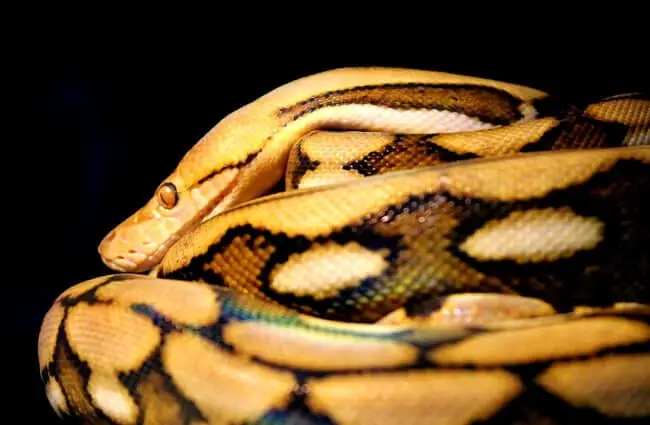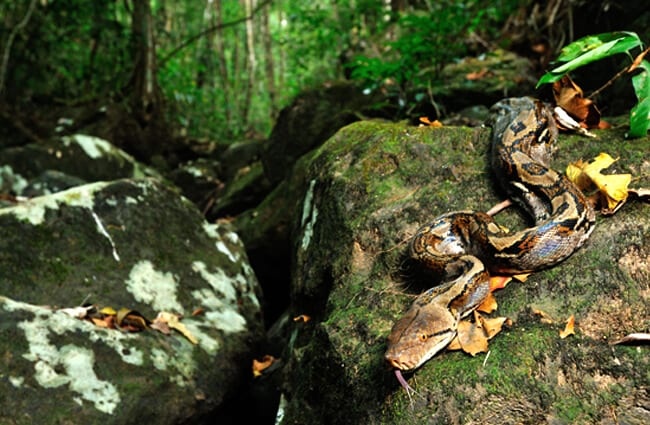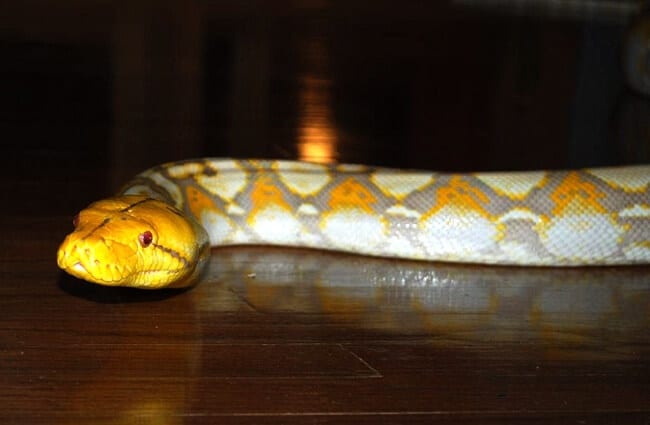The world of reptiles holds many fascinating creatures, and among them, the reticulated python stands out as a true giant. Known for its impressive size and intricate patterned skin, this constrictor captivates and sometimes instills awe. This comprehensive guide explores every facet of the reticulated python, from its natural habitat and hunting strategies to its place in culture and its interactions with humans.
Understanding the Reticulated Python
The reticulated python, scientifically known as Malayopython reticulatus, is a member of the Boidae family. This non venomous constrictor is native to South and Southeast Asia, and is renowned as one of the longest snakes in the world. While not the heaviest, capable individuals regularly exceed 6 meters (20 feet) in length, with documented cases reaching over 8.5 meters (28 feet).

Habitat and Distribution
Reticulated pythons thrive in a diverse range of habitats, including rainforests, swamps, grasslands, and even near human settlements. They are commonly found in countries like Indonesia, Malaysia, Thailand, Myanmar, Vietnam, and the Philippines. These adaptable snakes prefer areas with readily available water sources and abundant prey, and can be both terrestrial and arboreal, spending time both on the ground and in trees. Their distribution is strongly correlated with the presence of mammals and birds that serve as their primary food source.
Physical Characteristics
The name “reticulated” refers to the complex network of markings that adorn the snake’s skin. This intricate pattern, a combination of brown, black, and creamy yellow, provides excellent camouflage in the dappled light of their forest homes. The coloration varies geographically and individually, but the reticulated pattern remains consistent. Beyond the striking skin, reticulated pythons possess heat sensing pits along their lips, allowing them to detect warm-blooded prey even in complete darkness. These pits are crucial for nocturnal hunting.
Diet and Hunting Strategies

Reticulated pythons are powerful constrictors, relying on brute strength to subdue their prey. Their diet consists primarily of mammals like pigs, monkeys, and even occasionally larger animals like deer. They also consume birds, reptiles, and other vertebrates. The snake ambushes its prey, striking quickly and wrapping its body around the animal. With each exhale, the python tightens its grip, restricting blood flow and ultimately causing cardiac arrest. Once the prey is lifeless, the python swallows it whole, a process that can take several hours or even days depending on the size of the meal. Digestion is a slow process, and the python can go weeks or months without eating again.
Evolutionary History
The evolutionary origins of the reticulated python can be traced back to the ancient Boidae family, which first appeared during the Cretaceous period. Fossil evidence suggests that the ancestors of modern pythons originated in either Africa or South America, before dispersing to Asia and other parts of the world. The reticulated python itself is a relatively recent species, having evolved within the last few million years. Its large size and powerful constricting abilities are likely adaptations to the rich biodiversity and abundant prey available in Southeast Asia.
Reproduction and Life Cycle

Reticulated pythons are oviparous, meaning they reproduce by laying eggs. Females typically lay between 10 and 30 eggs, which they incubate for approximately 55 to 65 days. During incubation, the female may coil around the eggs, providing warmth and protection. Hatchlings are typically between 50 and 75 centimeters (20 and 30 inches) long and are fully capable of hunting small prey. They reach sexual maturity at around 3 to 5 years of age. Reticulated pythons can live for over 20 years in the wild and even longer in captivity.
Ecological Role and Interactions
As apex predators, reticulated pythons play a vital role in regulating prey populations within their ecosystems. They help to control the numbers of rodents, pigs, and other animals, preventing overgrazing and maintaining biodiversity. They also serve as prey for larger predators like crocodiles and tigers, although these interactions are relatively rare. Reticulated pythons often coexist with humans, sometimes preying on livestock, which can lead to conflict. However, they also help to control populations of agricultural pests like rats and mice.
Reticulated Pythons and Humans

Throughout history, reticulated pythons have held cultural significance in many Southeast Asian societies. They are often revered as symbols of power, strength, and fertility, and appear in mythology, folklore, and art. In some cultures, python skin is used to make clothing, drums, and other objects. However, increasing human encroachment on their habitat, coupled with hunting for their skin and meat, has led to population declines in some areas. The species is currently listed as “Least Concern” by the International Union for Conservation of Nature (IUCN), but ongoing monitoring and conservation efforts are necessary to ensure its long term survival.
Encountering a Reticulated Python in the Wild
If you encounter a reticulated python in the wild, it is important to remain calm and avoid sudden movements. Give the snake plenty of space and do not attempt to approach or handle it. Most pythons are not aggressive towards humans unless provoked or threatened. If the snake appears agitated, slowly back away and give it a clear escape route. Never attempt to kill or harm a python, as they are protected by law in many countries.
Caring for Reticulated Pythons in Captivity
Reticulated pythons require specialized care in captivity. They need a large, secure enclosure with appropriate temperature and humidity control. Providing a spacious habitat allows the snake to exercise and explore. A consistent diet of appropriately sized prey is essential. It is critical to provide a hide box and climbing opportunities. Regular veterinary checkups are vital to ensure the snake’s health. Due to their size and strength, reticulated pythons are not suitable pets for inexperienced reptile keepers.

Fascinating Facts
- Reticulated pythons can go for months without eating after a large meal.
- They are excellent swimmers and often bask in water.
- Females are typically larger than males.
- Their heat sensing pits allow them to “see” in the dark.
- They shed their skin in multiple pieces.
The reticulated python is a remarkable creature, a testament to the power and beauty of the natural world. By understanding its biology, behavior, and ecological role, we can appreciate this magnificent snake and work to ensure its survival for generations to come.

![Red Angus Closeup of a beautiful Red Angus cowPhoto by: U.S. Department of Agriculture [pubic domain]https://creativecommons.org/licenses/by/2.0/](https://animals.net/wp-content/uploads/2020/03/Red-Angus-4-238x178.jpg)




![Red Angus Closeup of a beautiful Red Angus cowPhoto by: U.S. Department of Agriculture [pubic domain]https://creativecommons.org/licenses/by/2.0/](https://animals.net/wp-content/uploads/2020/03/Red-Angus-4-100x75.jpg)

